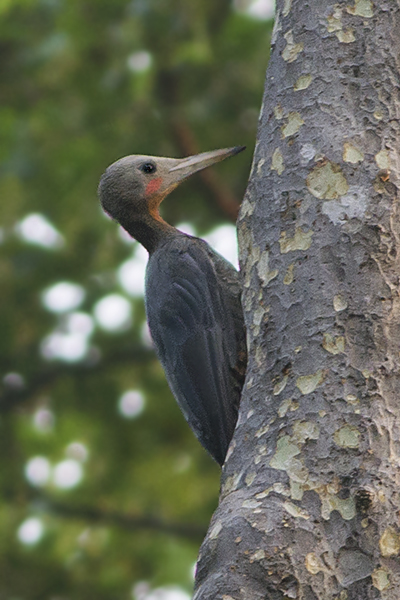Facts About Great slaty woodpecker
The great slaty woodpecker, the largest extant woodpecker species, belongs to the Picidae family and is native to the Indian Subcontinent and Southeast Asia. This impressive bird favors primary semi-open forests, moist deciduous forests, and tropical evergreen forests. Though it generally inhabits areas below 600 meters, it can occasionally be found in montane regions up to 2,000 meters. With its dark grey plumage, white spots, and long, chisel-tipped bill, it presents a striking appearance.
These woodpeckers are social creatures, often seen in groups of 3 to 6, typically comprising a breeding pair and their offspring. Their diet mainly includes ants, termites, wood-boring beetles, and occasionally small fruits. To forage for food, they employ various techniques such as gleaning, probing, pecking, and hammering to excavate wood.
In terms of breeding behavior, pairs roost in separate tree cavities and perform displays to establish their territory. They typically nest in large trees, rearing their young cooperatively within their group.
Unfortunately, the great slaty woodpecker’s dependence on large, old trees for feeding and breeding has rendered it vulnerable. They flourish in primary forests but experience significant population declines in logged forests. Habitat loss due to deforestation and logging, particularly in countries like Myanmar, Cambodia, and Indonesia, has placed them on the IUCN Red List as a Vulnerable species.

 Laos
Laos